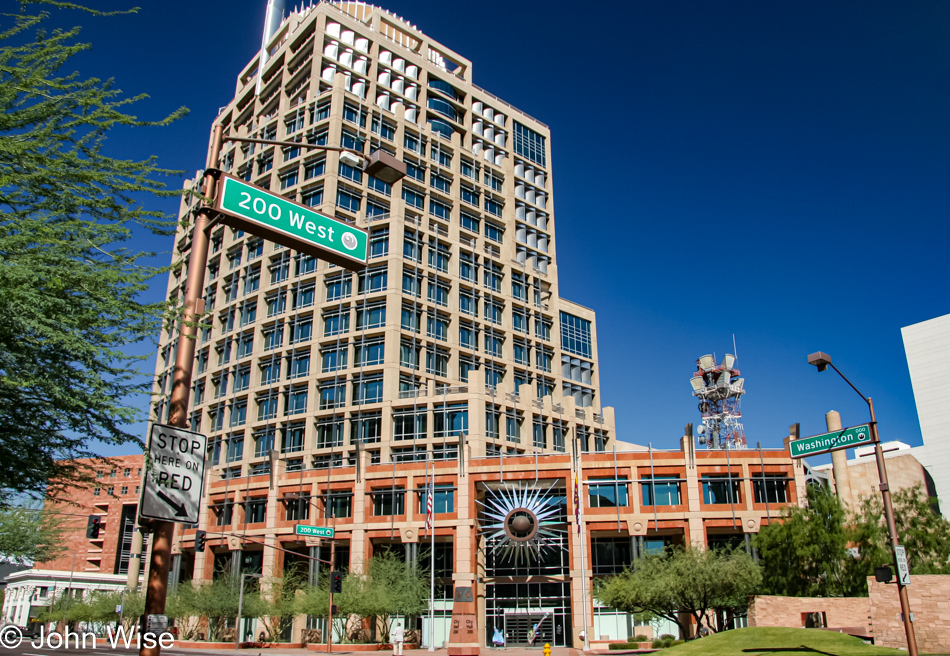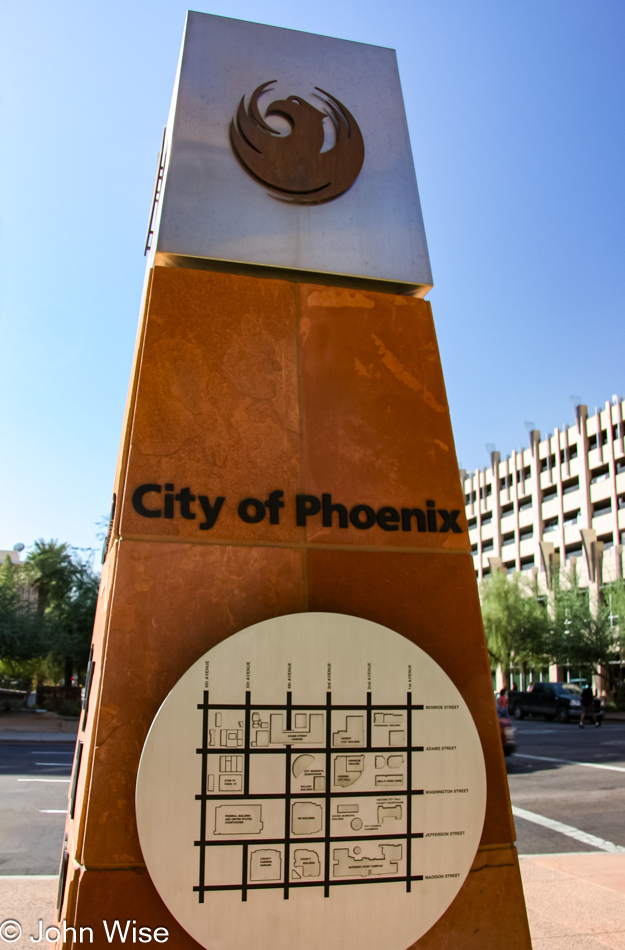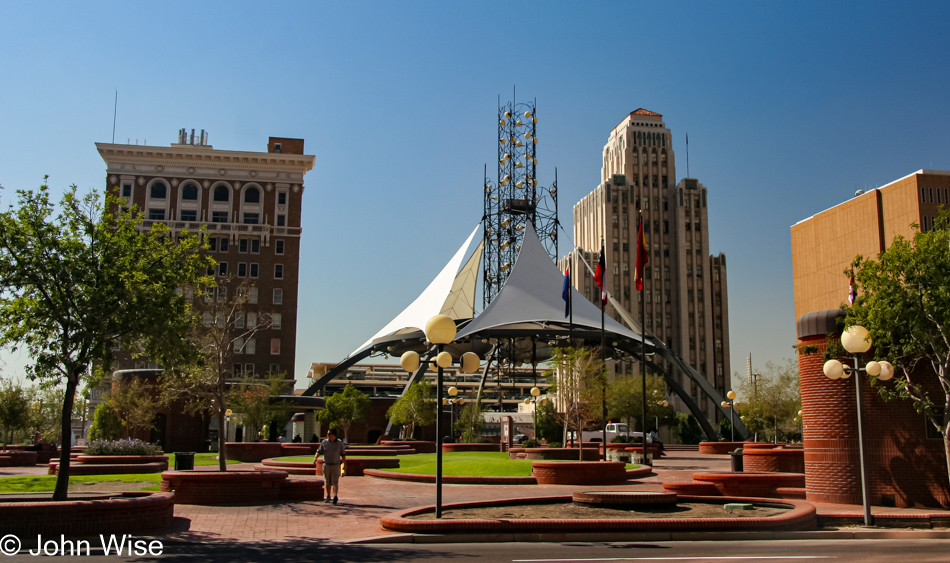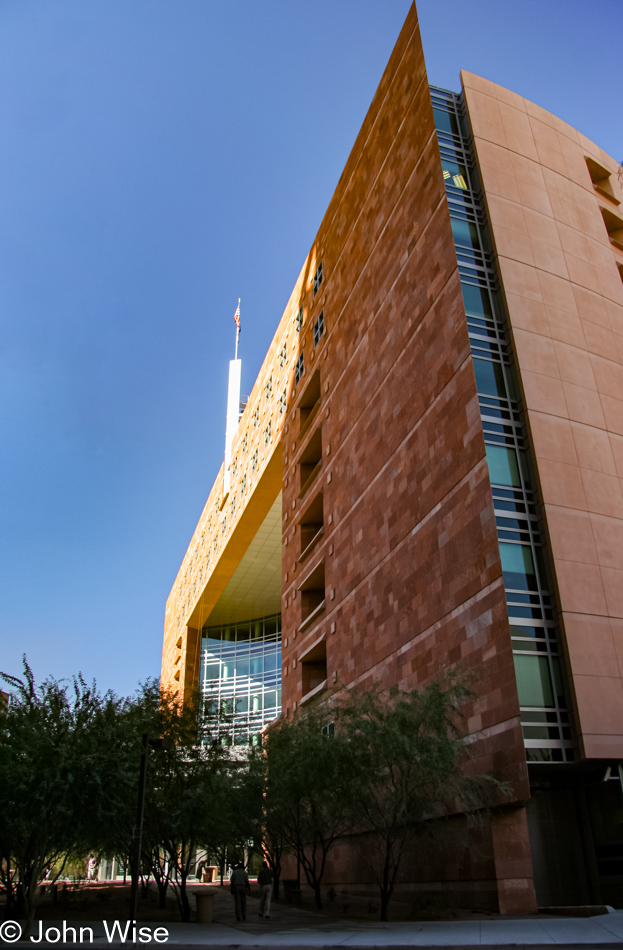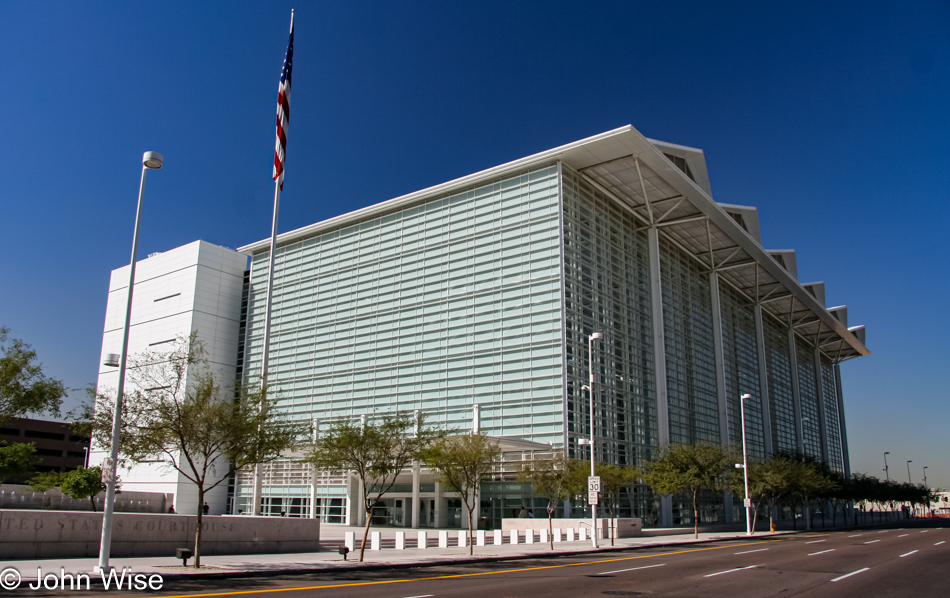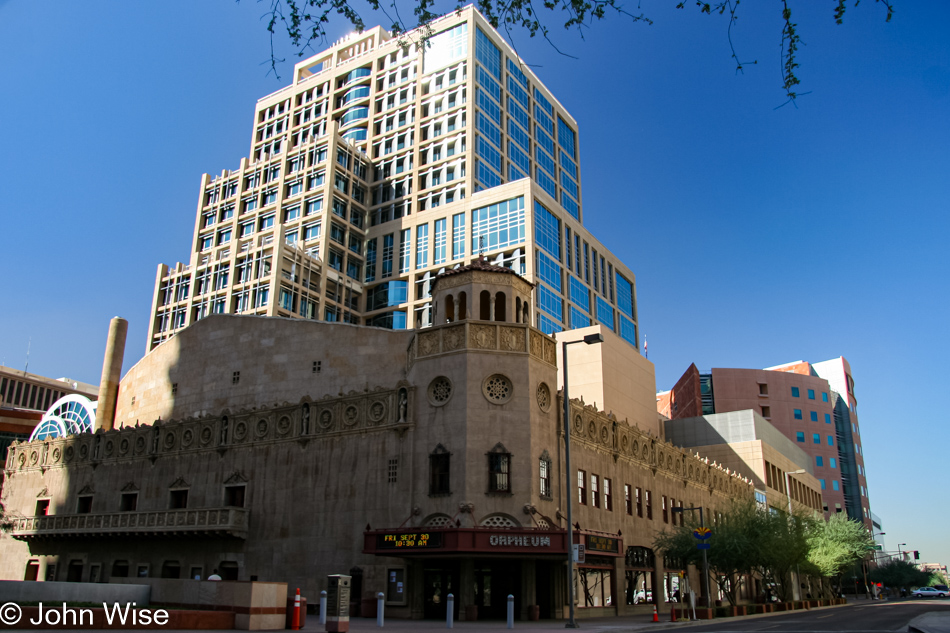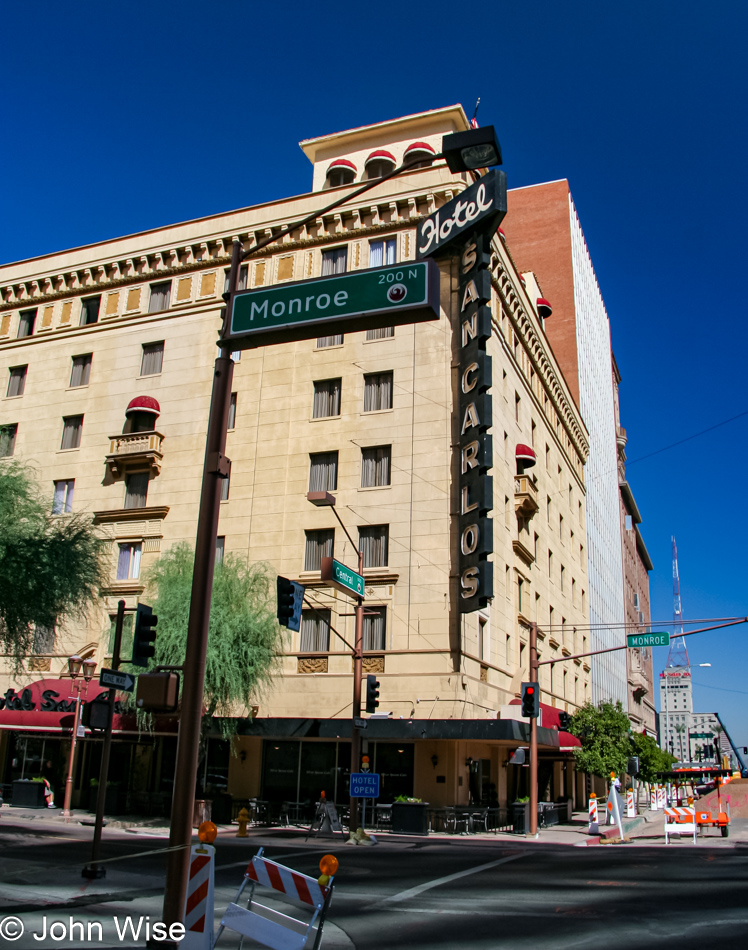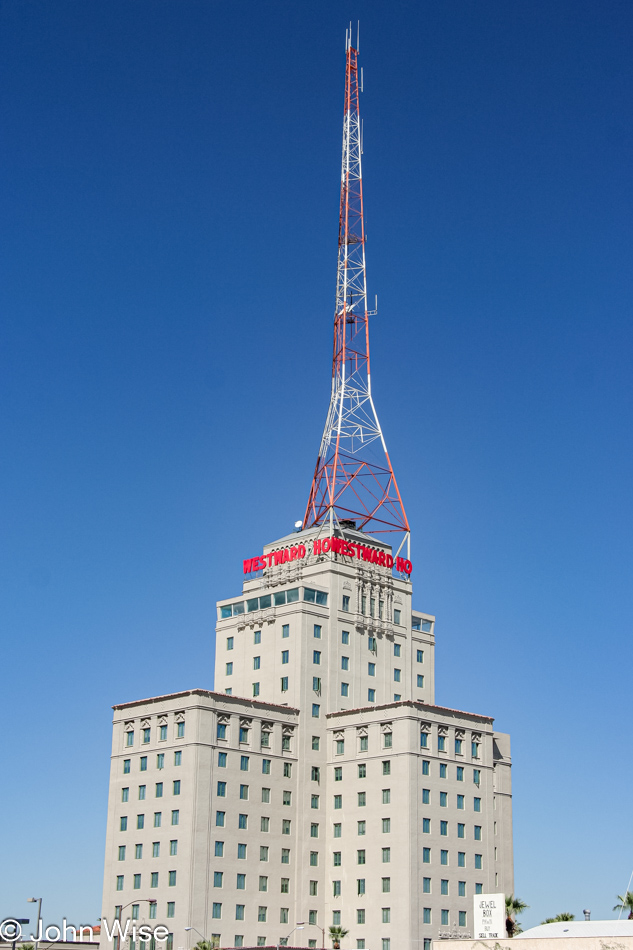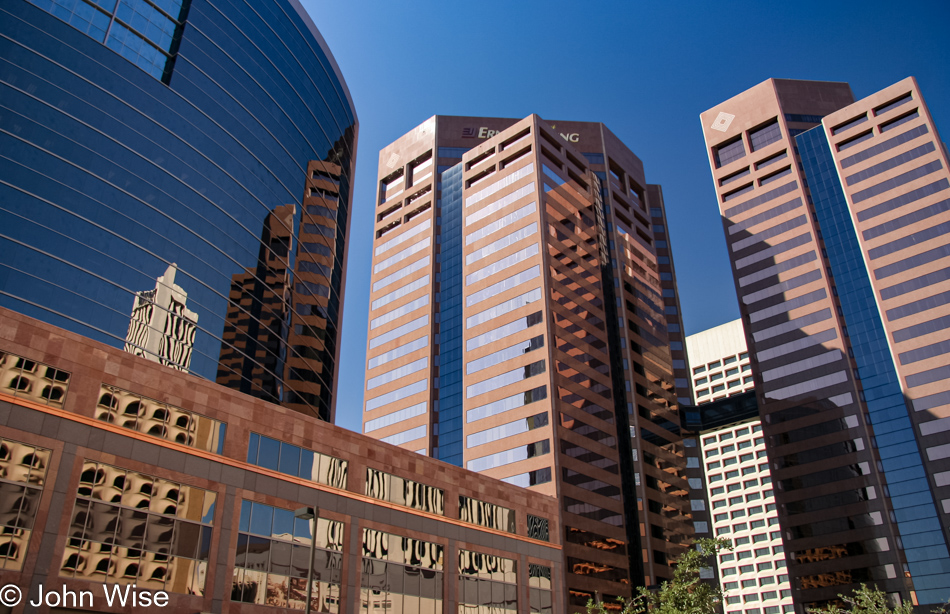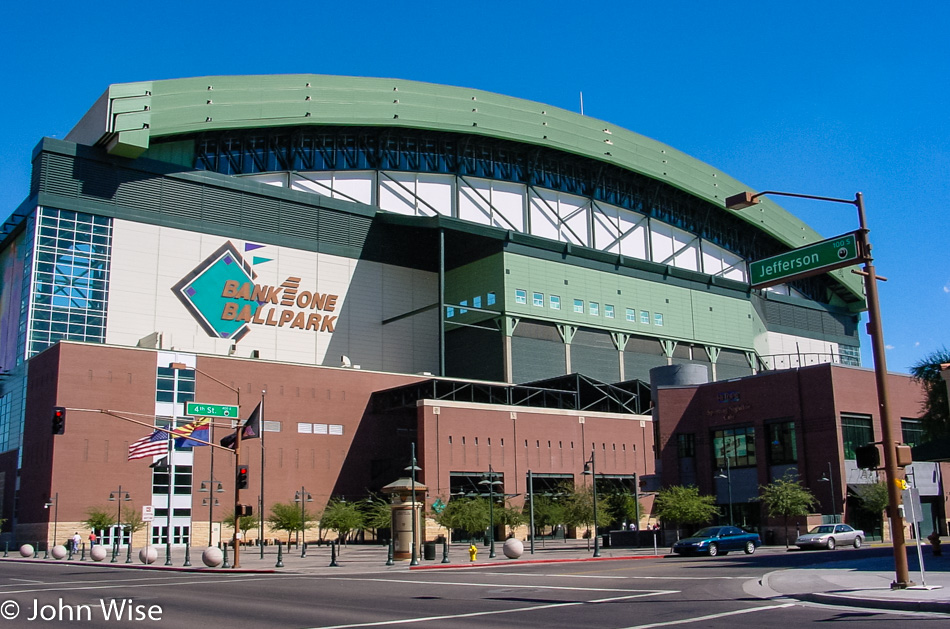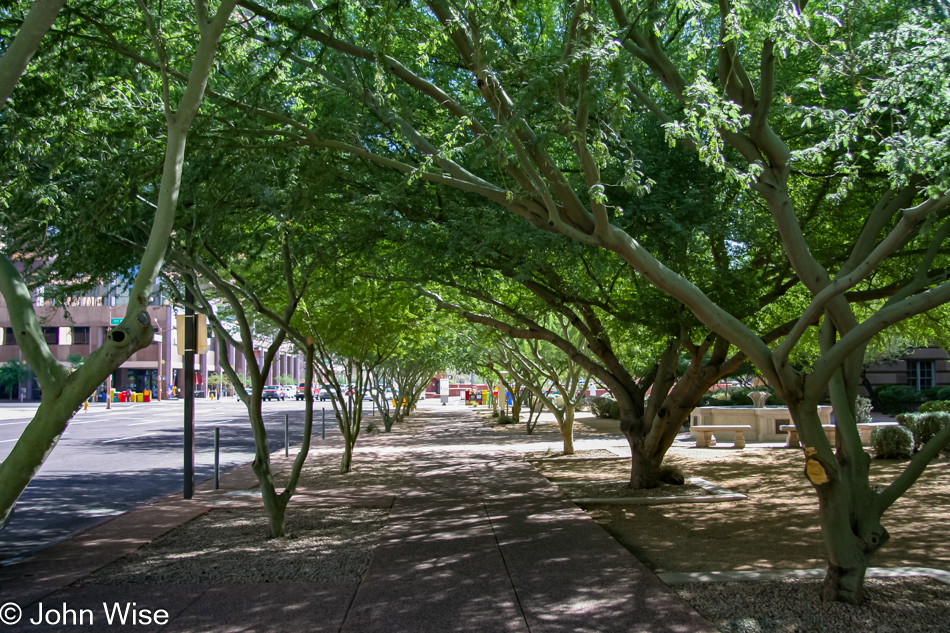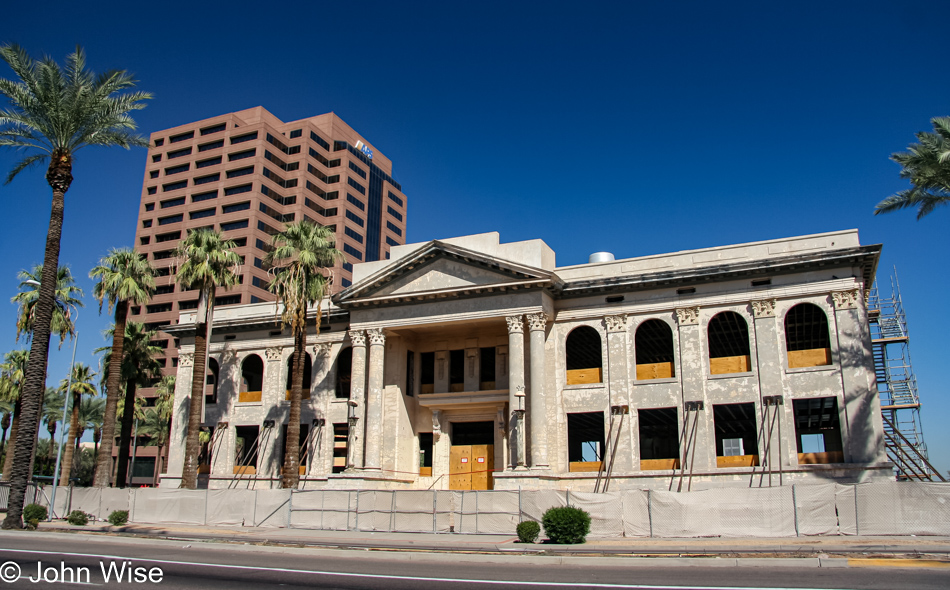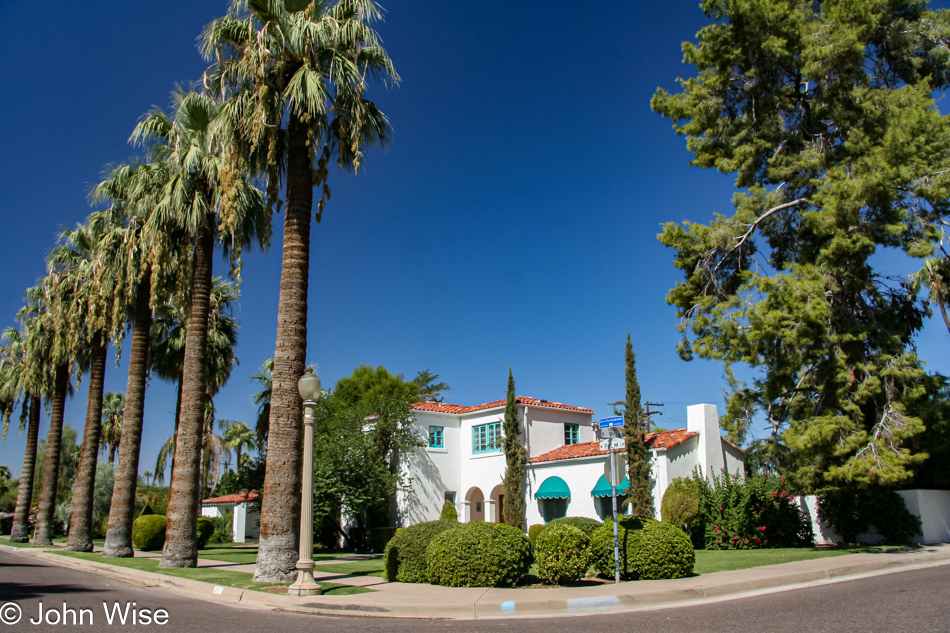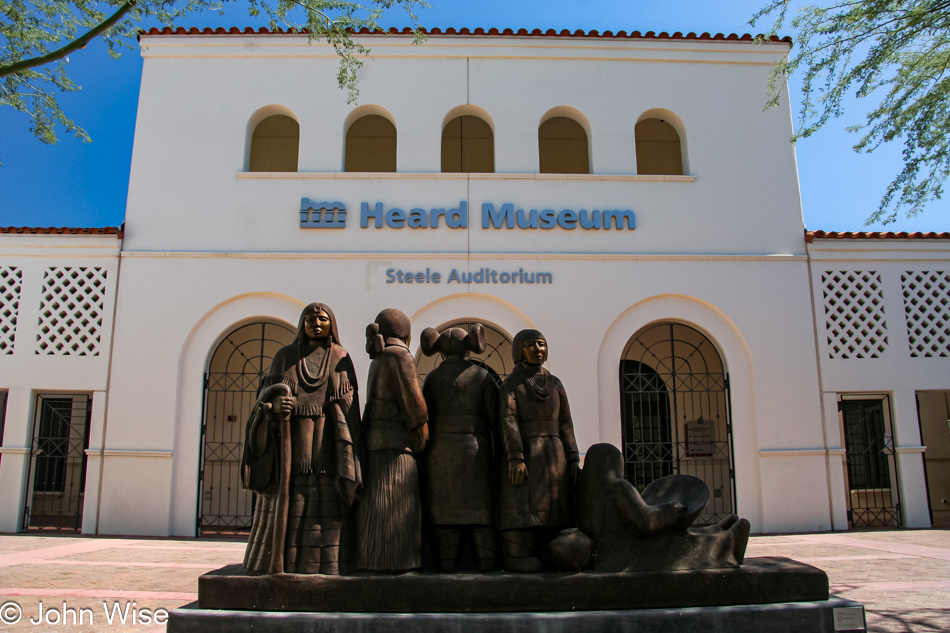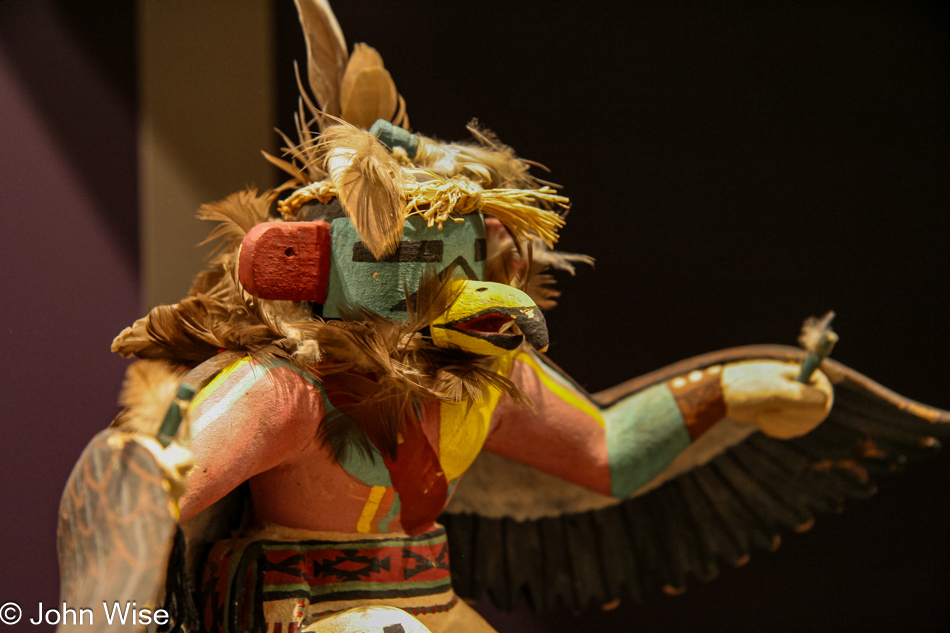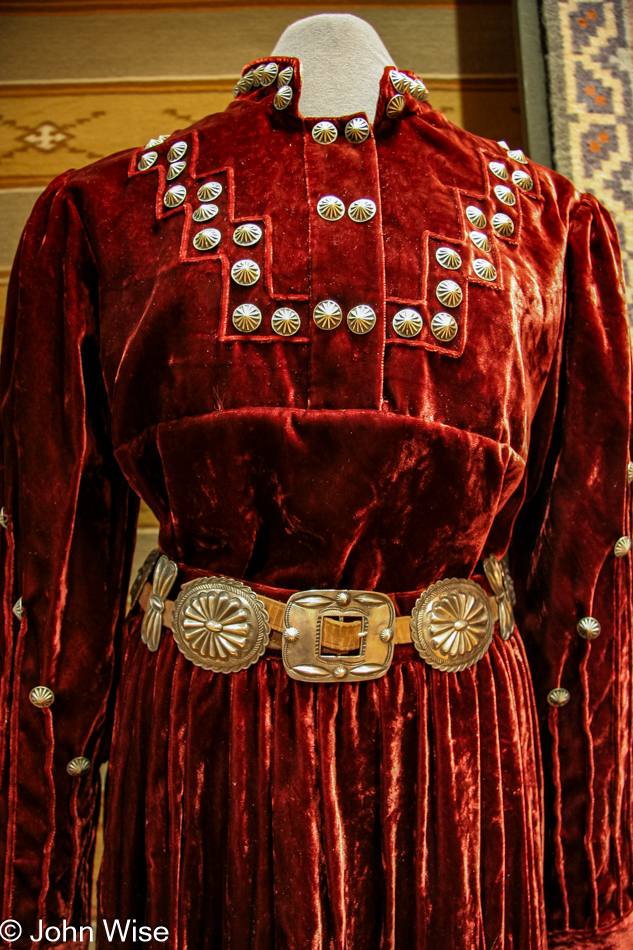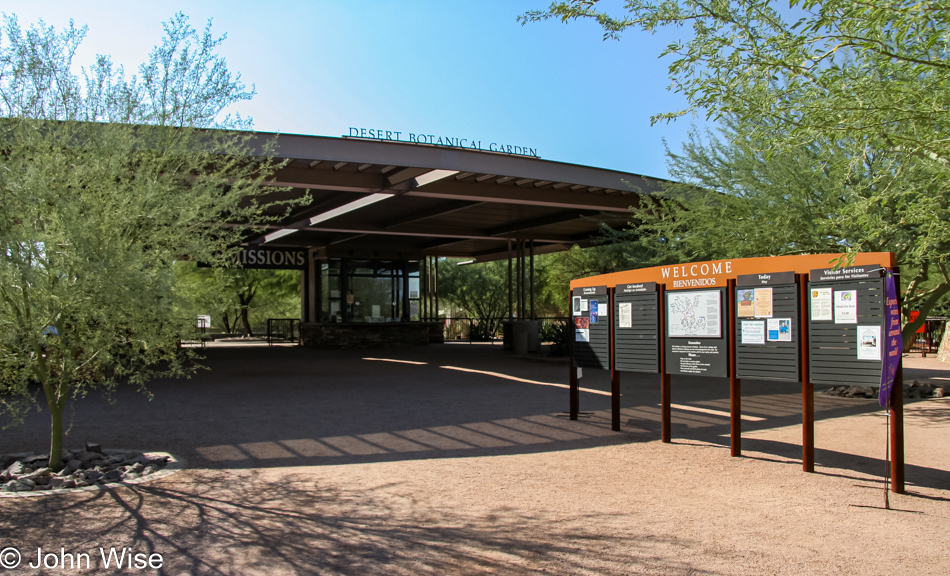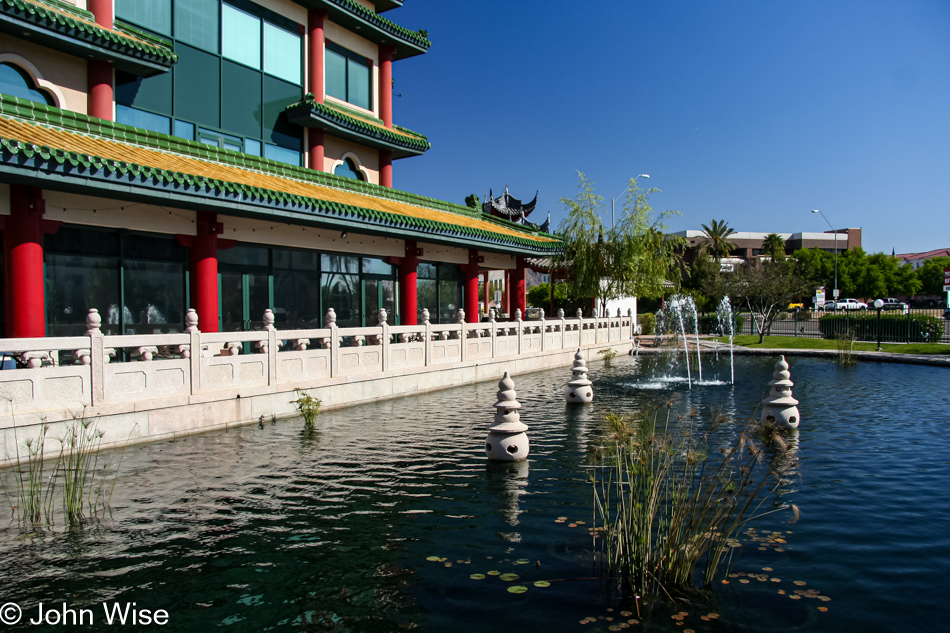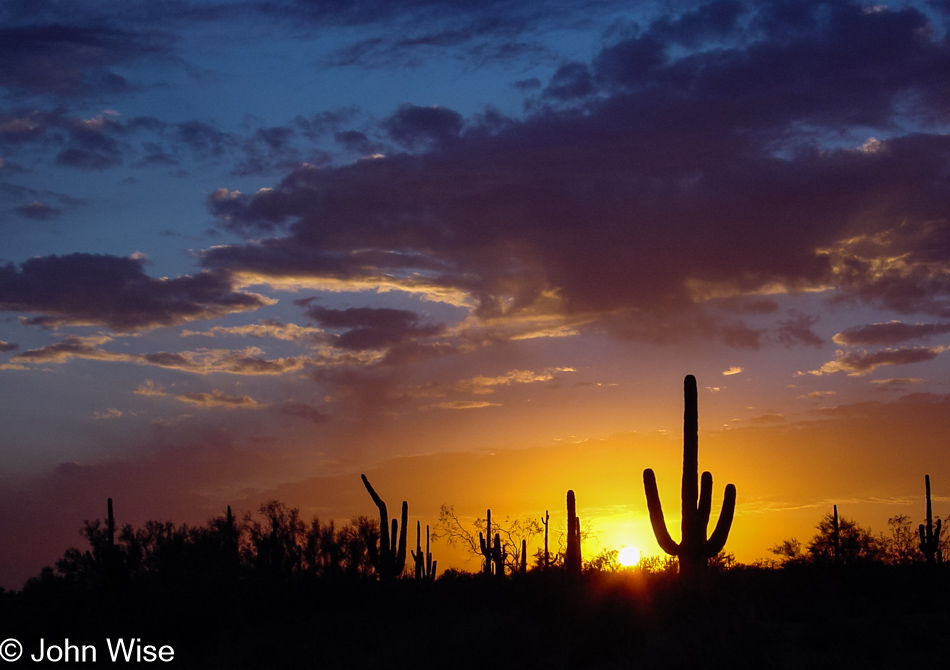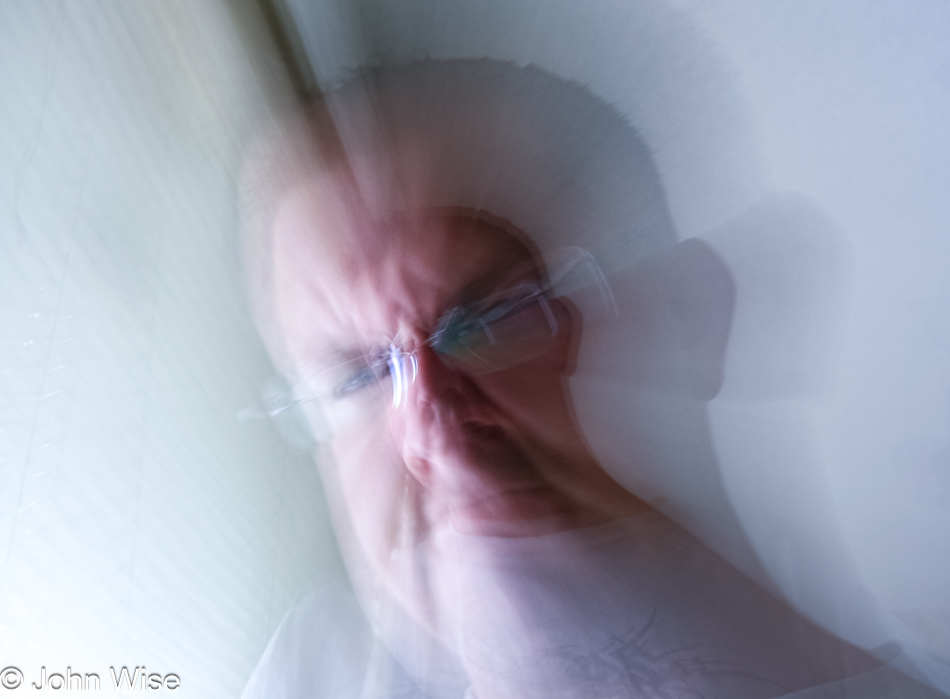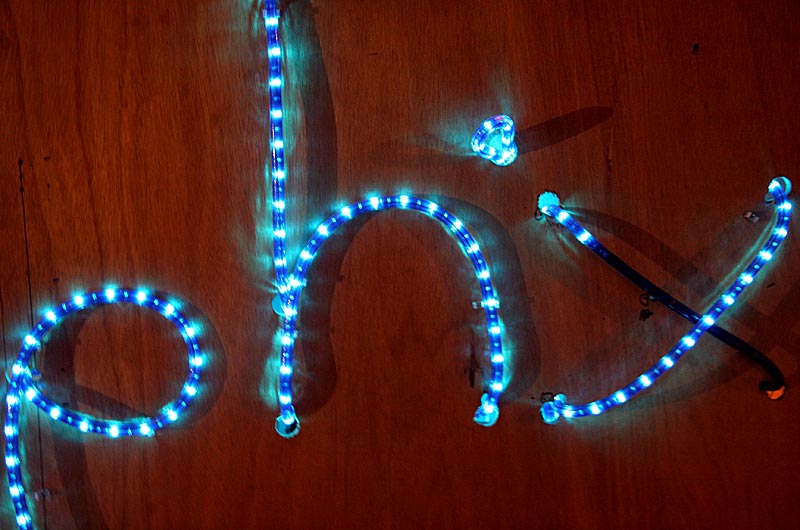
October 7th was my first visit to First Friday, sponsored and coordinated by Artlink. Held in downtown Phoenix, Arizona, since 1993, First Friday is an Art Walk where more than 90 venues showcase art in its myriad forms with various installations and exhibitions.

I followed the recommendation on Artlink’s website suggesting that first-time visitors begin their evening at the Burton Barr Library with free parking and a free shuttle. The library also has a map of facilities along the art walk that is updated monthly. Not knowing where to start, I got on the first bus, taking me on the eastern route.
Getting off near Roosevelt and 4th Street, I first stumbled upon this guy selling a locally produced movie on DVD titled Road Less Traveled. Three guys were set up with laptops showing the movie and t-shirts promoting their production company called Man On The Run.
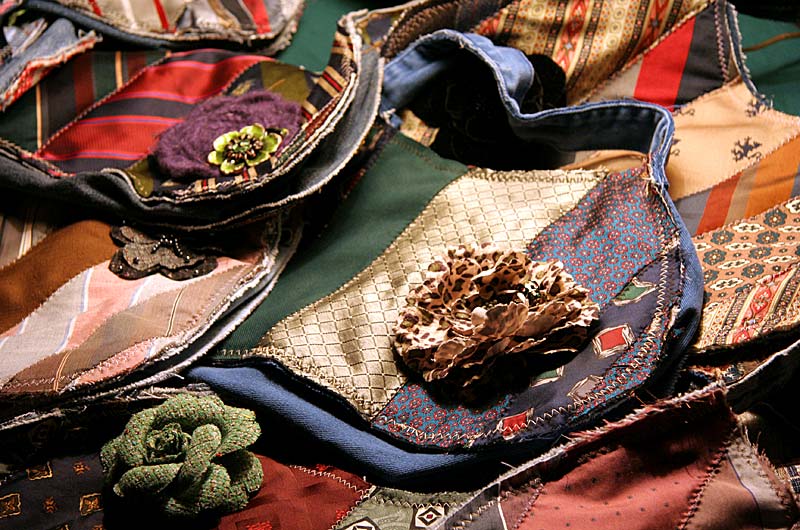
The movie guys wind me up with their contagious enthusiasm, creating more interest in what is on display and what lies ahead. Just here on the street corner, before ever making it into a gallery, I am checking out half a dozen artists. A local handbag designer has a wide selection of purses for sale.
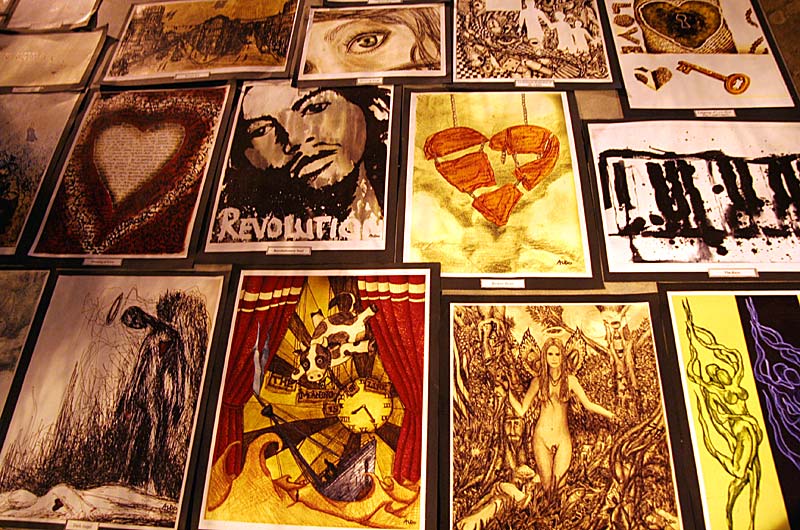
Next to the purses sits a young guy offering his drawings for sale. While primarily ink and pen fill the canvas with a Latino influence, elements of surrealism also poke their way into his work. The artist is quick to grab your ear, trying to capture your attention so he can pitch you his works.

Away from the normally empty lot, a gallery opened its doors, inviting passersby the chance to meander in and glance upon a number of paintings. About this time, another busload of shuttle passengers exits their vehicle and the street is teeming with people.
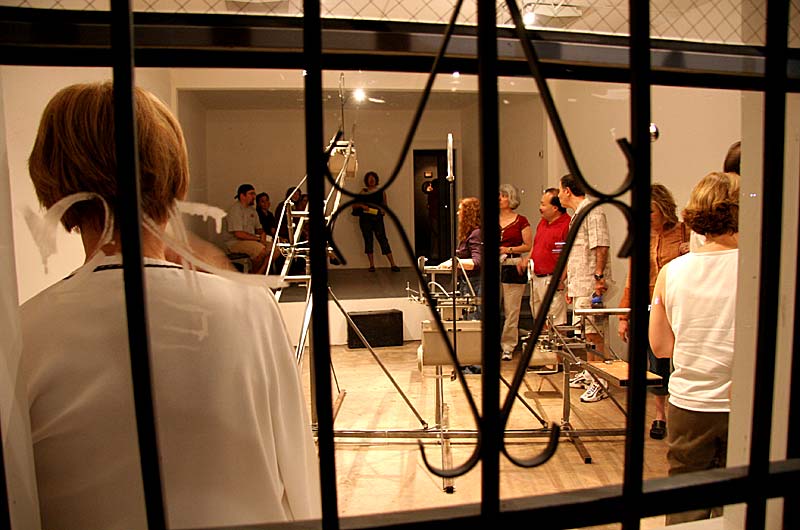
More venues open their doors; I must have been early. I’m still unsure what to expect and what I will find next. Adjacent to the paintings, another room features an installation of mechanical electronic teeter-totters. Having only visited a few of the vendors, my surprise is growing, and cynicism is giving way to genuine enthusiasm.
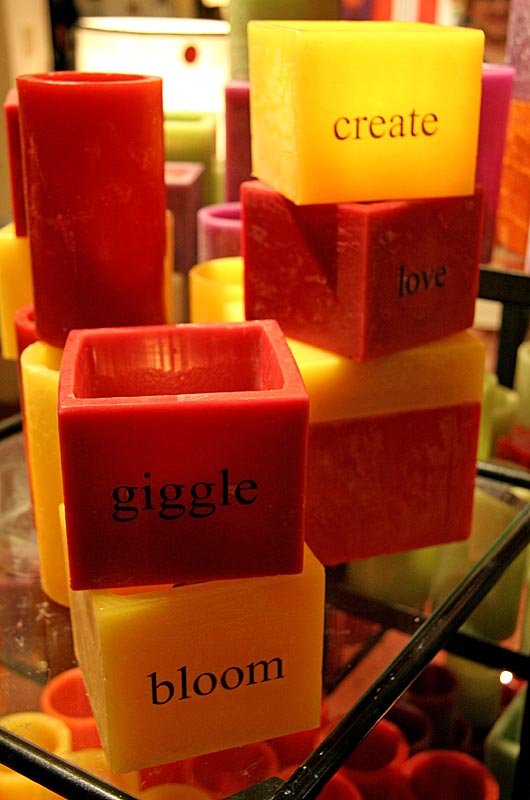
Not only is art on display, but there are also shops selling crafts, picture framers, pizzeria, lounges, cafes, a yoga studio, and places in between. These streets have long been forgotten and left to decay, but this renaissance, with its gathering steam, has the opportunity to fuel a cultural life in downtown Phoenix.
Last year, there were just over 80 exhibitors. This year, with over 90, more artists and craftsmen are joining in this important revitalization effort, and if the crowd continues to expand beyond the 10,000 that attended First Fridays in 2004, Phoenix stands a chance to become a popular destination for people seeking more than sun and golf.

The atmosphere here on this Friday night is rounded out with enough informality that most anti-authoritarian rebellious individuals should find some level of bohemian culture to connect with. In a city renowned for its sterility and quick removal of graffiti, the sight of these street-side posters gives an air of being in a ‘real’ city.
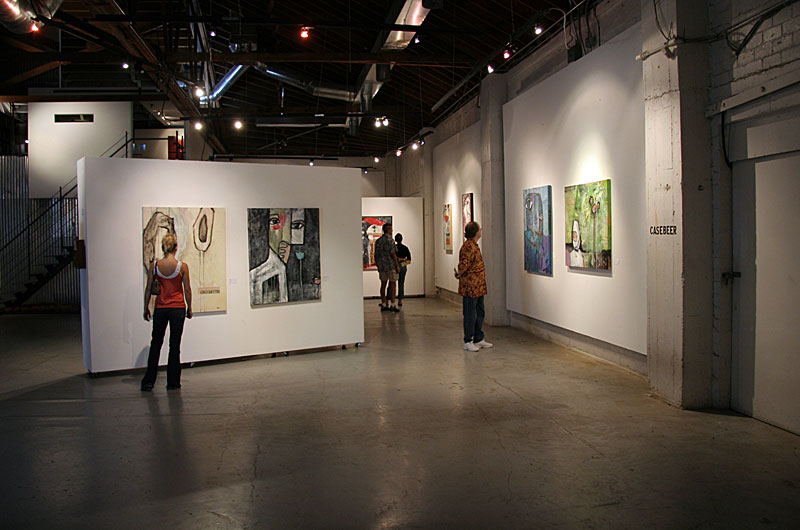
The galleries themselves range from wide-open, professionally designed spaces with work areas, meeting rooms, and even living environments to the funky small hodgepodge of eclectic weirdness that is sure to alienate the sophisticated snobs descending from Scottsdale looking for the refined sterility they are more accustomed to.
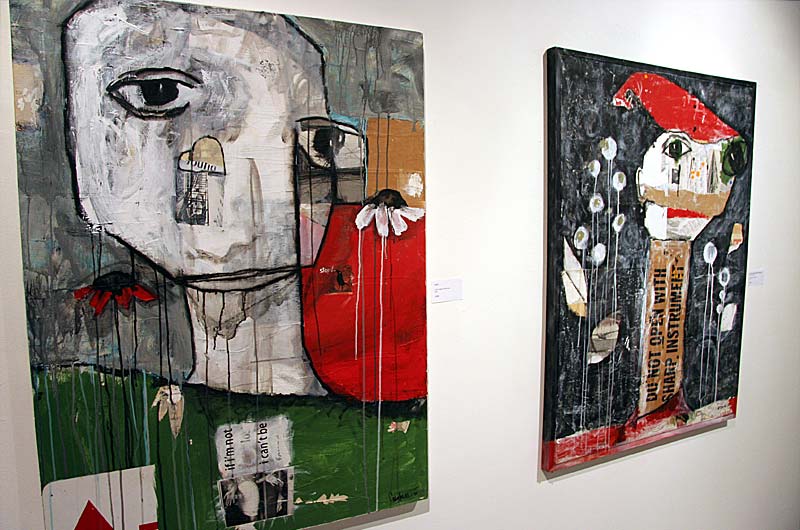
While much on display is from amateurs just beginning a career, there is a wealth of mature creativity rising like the proverbial Phoenix our city was named after. The works and artists featured are forever changing, so what you see on any given night may not be there on your next visit.
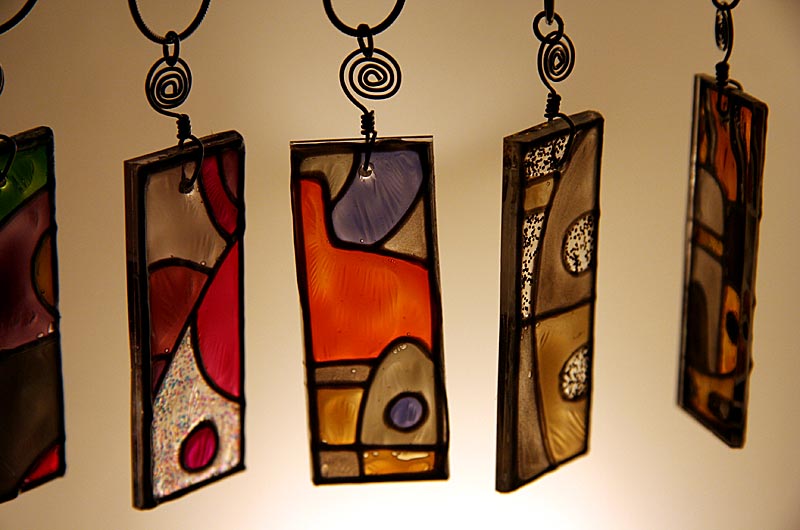
In the same gallery with the above paintings, I found other display areas, one of which included these pendants created by Jennifer R. Phillips, who owns and runs her own website at www.curiousglassdesigns.com, where you can see more of her creations. Contact Jennifer and maybe purchase something or another.
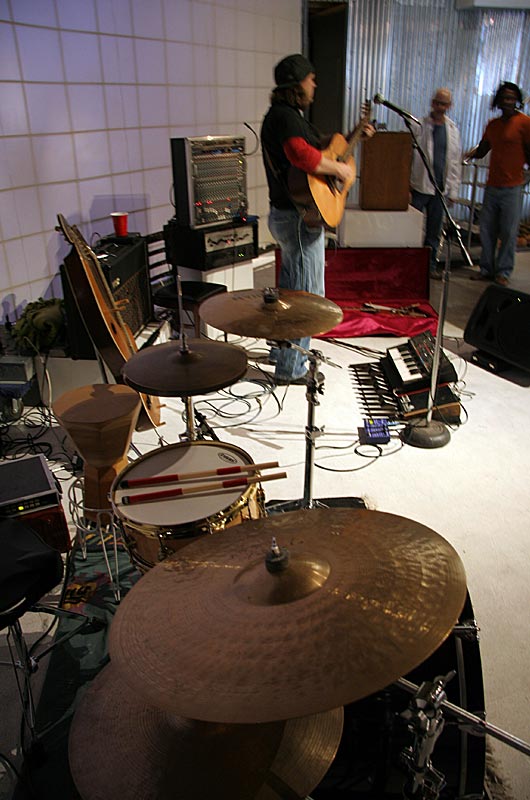
Turns out these artists appreciate a good ambiance and find that musicians performing live contribute to our fun. For the musicians not finding space in a gallery, some were simply planting themselves on a corner and started busting a jam. About this time, I have to pinch myself as this is not the Phoenix I bemoan; this is something that, if left to grow without strangulating overzealous governmental intrusions, could emerge as the step that puts Phoenix on similar footing with New York, Los Angeles, and Chicago regarding cultural diversity and entertainment.
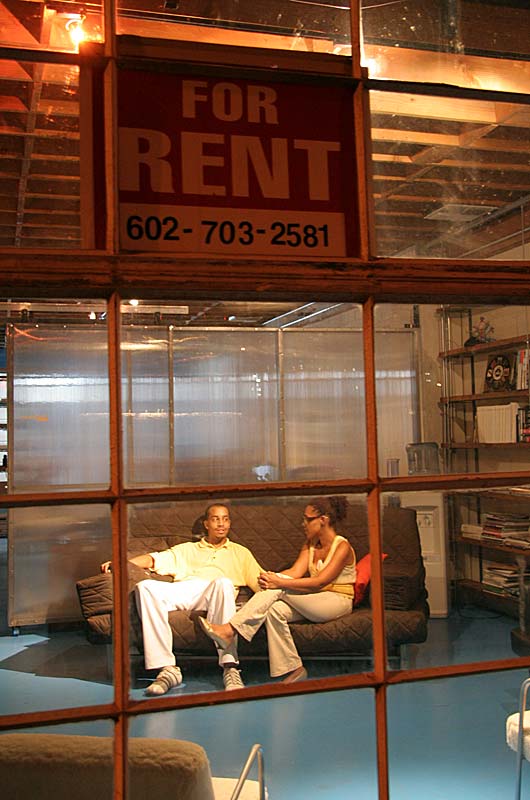
Sadly, history has shown the Phoenix authorities to be suspicious of young people congregating as the city fathers fantasize that nothing good can come from such activities. Surely, some bad apples will get in trouble for a minor infraction, which will bring the wrath and fury of law enforcement and this wondrous moment to a screeching halt.
For now, though, Artlink and First Friday are plowing forward with an aggressive and well-thought-out aim of grooming this art walk in Phoenix as the largest event of its kind in America. Artists interested in exhibiting should contact Artlink or visit First Friday to see what spaces are available for rent or where you might put down a table to hawk your own wares.

The nightlife in Phoenix will forever be changed by this event is my sincere hope. Many a time, Caroline and I have left Phoenix for Los Angeles for some cultural indulgence, catching midnight Hong Kong films in Hollywood, dinner in Little Tokyo in the heart of Los Angeles, and a stroll down Third Street Promenade in Santa Monica for music, art books, coffee, and the often bizarre street performance.
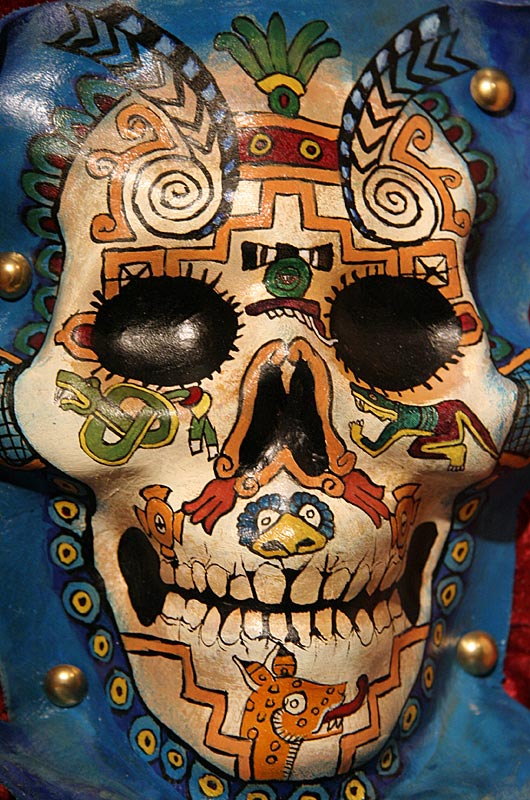
Today, though, a new face graces Phoenix; a burgeoning art scene enveloping a wide swath of diversity is being seen. Get downtown for a First Friday event and jump on the free shuttle bus. While you will see people from all walks of life, expect a little grumbling from the older, snootier types. This is an opportunity for the citizens and visitors of Phoenix to make a positive impact on the quality of life that can grow from this or, left ignored, will shrink back into its lonely self.
It is not only on the First Friday of the month, but Artlink is also now promoting the Saturday After. From 1:00 to 5:00 p.m., many of the venues are open and welcoming of the non-nocturnal types and families who might find visiting easier in the middle of the day on the weekend. No shuttle bus service is in operation on Saturdays.

Want more? Third Fridays are yet another opportunity to experience a night out on the town. Not all venues are open; some charge an entry fee or would like a donation. The best is to pick up the First Friday Map, which features a legend of who’s open on Saturday After and Third Friday.
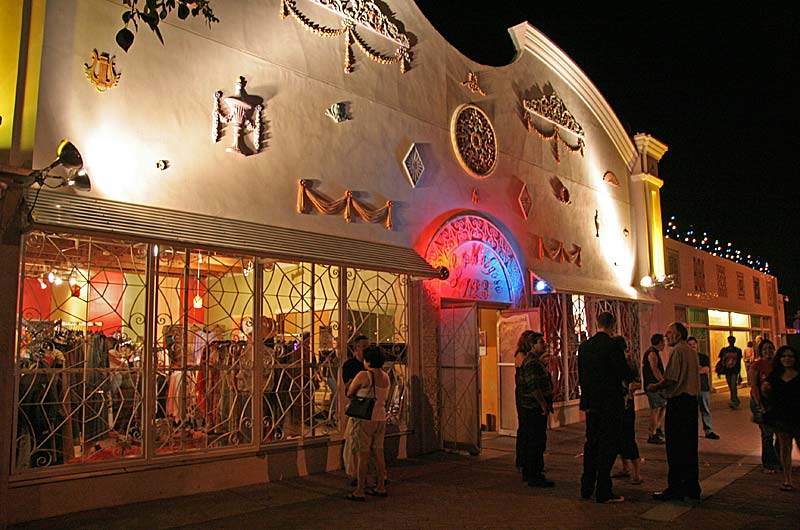
So come on, take a walk along Grand Avenue or up Roosevelt Street, and check out the new colors, sights, and sounds. Phoenix may still be the Biggest Small Town in America, but we are transforming. Support Artlink and First Friday by visiting or becoming a member to further support the “bringing together of artists, the public, and businesses for a greater understanding, appreciation, and promotion of the arts and development of a strong and vital downtown Phoenix arts community.”–*
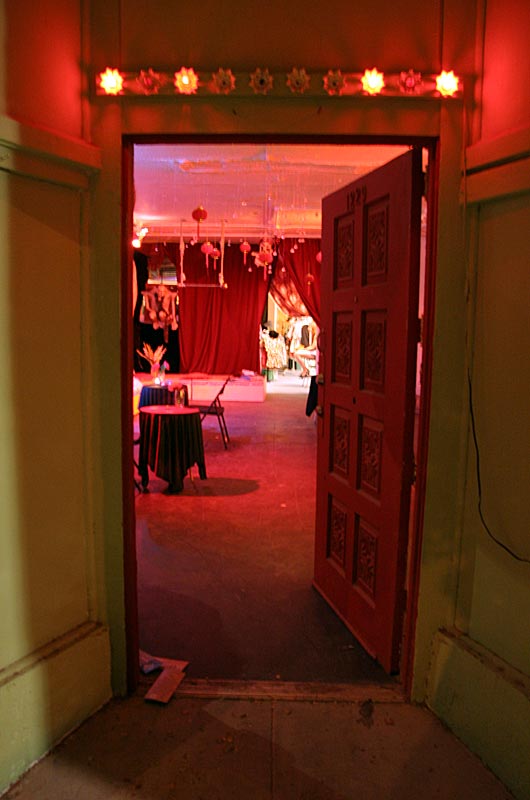
The next stop, The Red Door Studio at 1229 Grand Avenue, is open every Friday from about 6:30 to midnight and every Saturday from 7:30 (maybe) to midnight or so.
Special thanks to Artlink’s sponsors: the New Times, the Arizona Commission on the Arts, The Arts & Business Council of Greater Phoenix, Copper Square Downtown Phoenix, the Friends of the Phoenix Public Library, Phoenix College, Arizona Arts Supply, and Bentley Gallery.
–* quoted from Artlink brochure
